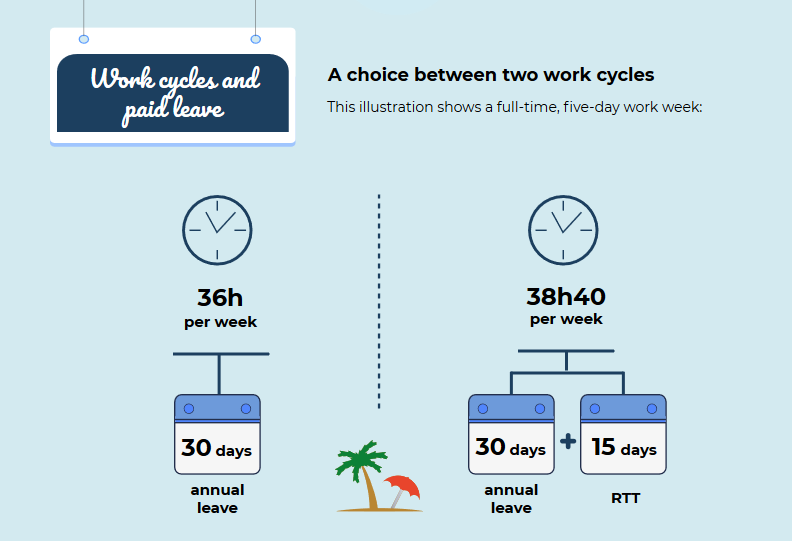3 min
Paid leave and working hours
This section provides information on the number of days of paid leave you can take as well as work cycle options.
Updated on 02 January 2020

Full-time work
Working hours are divided into a five-day work week cycle.
There are two options that take into account how work is organised. Your chosen option impacts the amount of additional paid leave (RTT) days you will receive. Your options are:
- 36 hours per week: you will not receive additional paid leave and can either work 4.5 days every week or 4 days one week and 5 days the next week; or
- 38 hours 40 minutes per week: you will receive 15 days of additional paid leave per year and will work five days per week.
Annual leave and RTT
If you work full time:
- 36-hour-week cycle: you will receive 30 days of annual leave,
- 38-hour-40-minute-week cycle: you will receive 30 days of annual leave plus 15 days of RTT.
If you work part-time, your leave is reduced based on your working hours and the number of days worked per week.
If you have been in your position for less than one year, the number of days of annual leave granted is proportional to the time you have worked (i.e., 30 d x number of months completed/12).
Part-time work
You have the option to request that your job be a part-time position. You can ask to work 50%, 60%, 70% or 80% of full-time hours.
Part-time work status is automatically granted (i.e., it cannot be refused by the administration) in the following situations:
- for the birth of each child up to age three, or the adoption of each child for three years following the child’s arrival in the home;
- to care for your partner, a child or a parent with a disability requiring a third person to be present or who has been the victim of an accident or serious illness;
- if the civil servant has a disability.
In all other situations, part-time status is granted depending on the department’s needs and may be refused.

